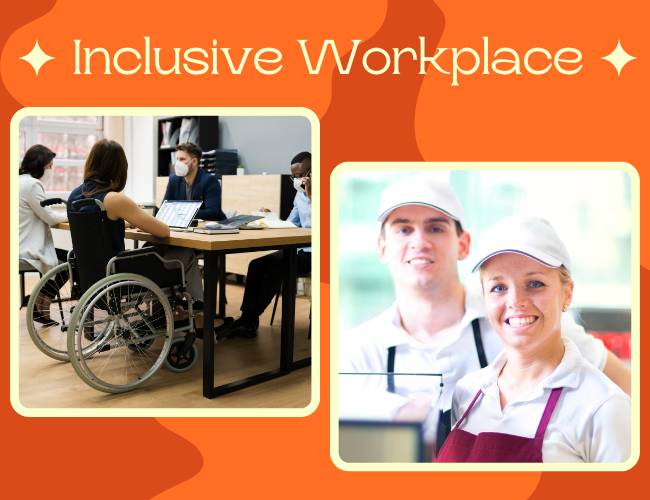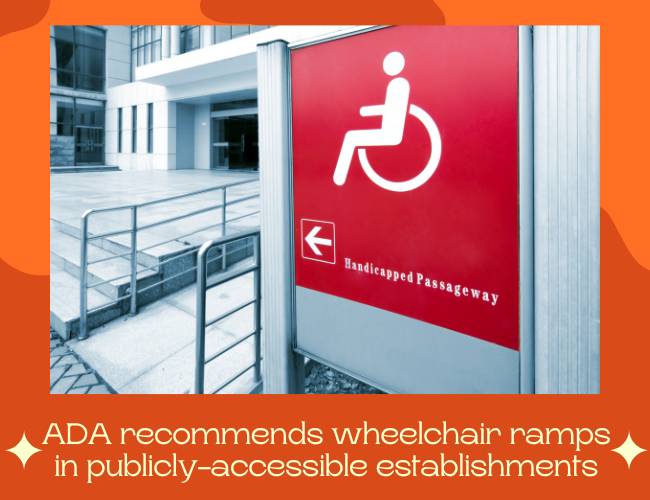Historically, people with disabilities were either unemployed and languishing at home, in an institution, or placed in sheltered employment alongside others with disabilities. This occurrence was very much in line with societal norms that treated people with disabilities differently and made false assumptions about their capacity for productive work.
 Myths About Disability Employment
Myths About Disability Employment
Many employers still suffer from entrenched fears and myths surrounding the employment of people with disabilities. The report Disability: Dispelling the Myths outlines seven key myths that can be summarized as follows:
- Individuals with disabilities do not have the right skills for business.
- Support in the workplace will be too costly.
- Saying the wrong thing in the workplace may upset people with disabilities.
- Co-workers will feel uncomfortable, and their productivity will drop away.
- Getting information on how to hire people with disabilities is difficult and time-consuming.
- Hiring people with disabilities exposes businesses to litigation.
- Hiring people with disabilities will result in reduced profits.
Positive Developments for People With Disabilities
The emergence of anti-discrimination legislation in most developed countries has helped in ensuring employers take seriously, job applications from people with disabilities. At the same time, not-for-profit organizations and other service providers began to establish employment programs that actively placed people with disabilities into open employment positions rather than in segregated employment.
The Americans with Disabilities Act (ADA) emphasizes the importance of giving employment opportunities to disabled people with the American Disabilities Act (1990), including the amendments in 2008, for several reasons:
- Promoting equal opportunities: The ADA aims to promote equal employment opportunities for all individuals, regardless of their disabilities. It prohibits discrimination in the workplace and ensures that disabled people have the same opportunities for employment, advancement, and benefits as non-disabled people.
- Encouraging inclusion: Giving employment opportunities to disabled people helps to promote a more inclusive and diverse workplace. Inclusion can lead to a better understanding of different perspectives and abilities and create a more positive and productive work environment.
- Reducing poverty and dependence: Many disabled people face higher poverty rates and dependence on government assistance. Employment opportunities can help reduce these rates by allowing disabled people to become self-sufficient and financially independent.
- Fostering economic growth: When disabled people are employed, they can contribute to the economy and support local businesses. This move can stimulate economic growth and create a more vibrant and prosperous community.
The ADA emphasizes the importance of giving employment opportunities to disabled people to promote equal opportunities, encourage inclusion, reduce poverty and dependence, and foster economic growth.
These developments, as simple as installing aluminum wheelchair ramps in publicly-accessible establishments, reflect the changing community attitudes toward people with disabilities. Instead of being perceived as objects of pity, not capable of work, they started to be seen as community assets, totally under-utilized from an employment perspective.
Employer Benefits of Hiring People with Disabilities
 Employers, slowly at first but with increasing momentum, employed people with disabilities and began to reap the many benefits. The benefits to employers are quite substantial and can best be summarized as follows:
Employers, slowly at first but with increasing momentum, employed people with disabilities and began to reap the many benefits. The benefits to employers are quite substantial and can best be summarized as follows:
- Companies with a culture of inclusion are better placed to do business than companies that don’t have such a policy and culture. In today’s business environment, it is becoming increasingly important to have diversity in the workforce. The large pool of people with disabilities provides an ideal platform for employers who wish to develop a diverse workforce and secure a competitive advantage.
- The larger community, which makes up the business community’s client base, is more receptive to enterprises with diverse workforces and more willing to do business with them.
- The effects of employing people with disabilities are reflected in the bottom line. There is now ample evidence to show that, contrary to popular assumptions, people with disabilities save employers from costs in the areas of occupational health and safety, recruitment, and training and are just as productive as mainstream employees. To illustrate this point further, Pizza Hut has a Jobs Plus program that employs 10,000 people, of whom over two-thirds have an intellectual disability. The staff turnover for that group is just 20% compared with 150% in the non-disabled segment.
- People with disabilities often bring important skills to the business world. They often develop skills such as perseverance, determination, and goal-setting, which are very important business assets.
- Numerous studies have indicated that employing people with disabilities has a very positive effect on overall employee morale. Exposing people without disabilities to the accomplishments of those with disabilities is a great source of motivation.
- The employment of people with a disability results in substantial community benefits. In countries such as the United Kingdom, the United States of America, and Australia, the statistics show that 20% of the population has a disability. Many of these people are on welfare payments. Therefore, the turnaround from welfare recipient to taxpayer represents an enormous community benefit.
Disabled Employee Benefits
People with disabilities securing mainstream employment experience a range of benefits:
- Continued dependence is replaced by increasing independence.
- Increased self-esteem and social confidence as they make friends at work and experience a sense of being part of a productive workforce.
- Improved acceptance in the local community as they are perceived to be contributing community members.
- Increased freedom to participate in activities formerly beyond their financial reach.
The win-win situation is indisputable; all that needs to happen is for current advocacy programs and service providers. The employment of people with disabilities in mainstream businesses has indeed increased in recent years. This trend results from a growing recognition of the benefits of an inclusive workplace and the positive impact that is employing disabled people can have on a business.
For employees with disabilities, having a job can lead to increased self-esteem, financial stability, and a sense of purpose. It also helps to break down stereotypes and promote greater understanding and acceptance of disability in society.
For employers, employing people with disabilities can bring a diversity of skills, perspectives, and experiences to the workplace. The positive impact can lead to a more innovative and inclusive work environment, which can boost employee morale and productivity.
